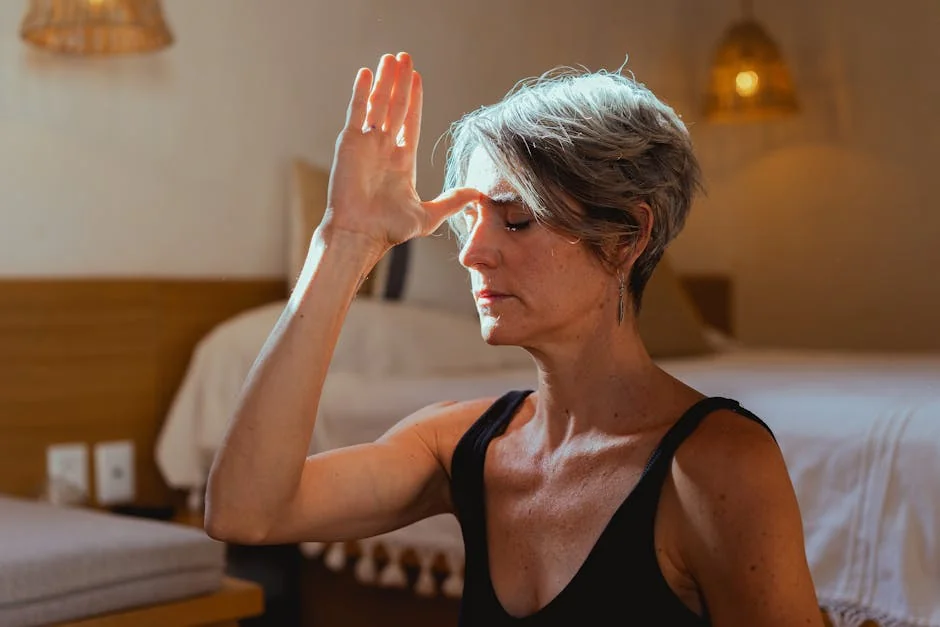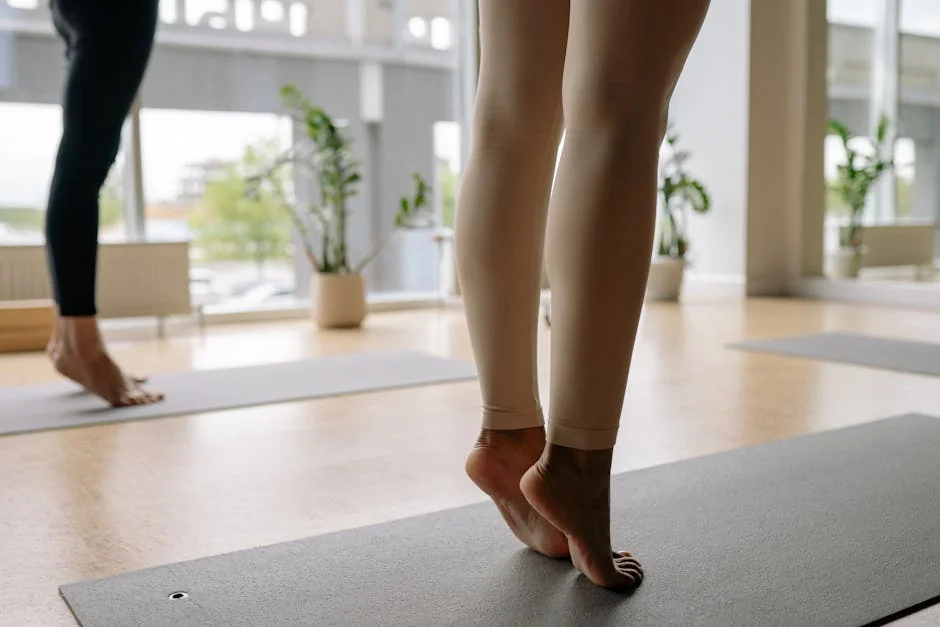Feeling overwhelmed, distracted, or constantly stuck on a mental hamster wheel? You’re not alone. In our fast-paced world, the ancient arts of practicing mindfulness and meditation have emerged as powerful, science-backed anchors for modern life. But what exactly are they, and how can you start experiencing their profound benefits without feeling like you need to become a zen master? This is your no-fluff, practical guide to demystifying the process and building a sustainable practice that fits into your busy schedule.
In this comprehensive guide, we’ll break down the key differences between mindfulness and meditation, explore the incredible benefits for your brain and body, and provide you with a simple, step-by-step plan to begin today. You’ll discover a toolkit of easy techniques and learn how to weave moments of calm awareness into your everyday routine, transforming stress into presence and reactivity into thoughtful response. Let’s begin the journey inward.
What is the Difference Between Mindfulness and Meditation?
Many people use the terms "mindfulness" and "meditation" interchangeably, but they refer to related, yet distinct, concepts. Understanding this difference is the first step to building an effective practice.
Mindfulness is the basic human ability to be fully present and aware of where we are and what we’re doing, without being overly reactive or overwhelmed by what’s going on around us. It’s the quality of paying attention to the current moment—the sensations in your body, the thoughts in your head, the environment you're in—with an attitude of openness and curiosity. You can practice mindfulness at any time: while washing dishes, listening to a friend, or stuck in traffic.
Meditation is a more formal practice of training the mind. It’s a dedicated time where you consciously set aside a few minutes to cultivate a specific mental skill, like focus, awareness, or compassion. Think of meditation as a scheduled workout for your mind.
A simple analogy can help:
- Mindfulness is the muscle. It's the general capacity for awareness that you carry with you throughout your day.
- Meditation is the workout. It's the focused exercise you do in the gym to strengthen that muscle.
While not all meditation is mindfulness-based (some focus on visualization or mantra repetition), mindfulness meditation is one of the most popular forms. In this practice, you use the meditation session to specifically train your mindfulness muscle. The ultimate goal is to then bring that strengthened awareness into every other part of your life.
The Science-Backed Benefits of a Consistent Practice
You might have heard that mindfulness and meditation are "good for you," but the breadth of scientifically validated benefits is truly remarkable. This isn't just spiritual theory; it's neuroscience and physiology. A consistent practice can create tangible, positive changes in your well-being.
Mental and Emotional Benefits
- Reduces Stress and Anxiety: This is one of the most well-documented effects. Meditation dials down the body's production of the stress hormone cortisol. By observing your anxious thoughts without getting tangled in them, you break the cycle of worry and reactivity. This process is deeply connected to the art of mindfulness and letting go.
- Enhances Focus and Concentration: Just like lifting weights builds biceps, meditation strengthens your "attention muscle." Regular practitioners find it easier to stay on task, resist distractions, and maintain cognitive performance.
- Improves Emotional Regulation: Meditation creates a small space between a triggering event and your reaction. In that space, you gain the power to choose your response, rather than being hijacked by anger, fear, or frustration.
- Increases Self-Awareness: By turning your attention inward, you begin to understand your own mental patterns, habits, and biases. This self-knowledge is the foundation for personal growth and healthier relationships.
Physical Health Benefits
- Lowers Blood Pressure: The "relaxation response" triggered by meditation helps reduce strain on the heart and blood vessels, contributing to better cardiovascular health.
- Improves Sleep Quality: By calming the nervous system and quieting a racing mind, mindfulness practices are a powerful tool for combating insomnia and achieving more restful sleep.
- Boosts Immune Function: Studies have shown that meditators can have a stronger immune response, helping you fight off illness more effectively.
- Manages Pain: Mindfulness can change your perception of pain. By observing physical sensations with curiosity rather than resistance, the subjective intensity of chronic pain often decreases.
Neurological Changes
Through the lens of neuroplasticity, we know the brain can change throughout life. Meditation is a powerful catalyst for this change.
- It can increase gray matter density in the prefrontal cortex, the area associated with decision-making and focus.
- It can decrease the size and activity of the amygdala, the brain's fear center, which is why practitioners often feel less reactive to stress.
How to Start Practicing Mindfulness and Meditation Today: A Beginner's Guide
The thought of "clearing your mind" can be intimidating. The secret is that no one clears their mind. The goal is to notice your mind's activity. Here is a simple, five-step framework to get you started.
Step 1: Find a Quiet Space and Set a Time
Choose a relatively quiet place where you won't be interrupted for a few minutes. It doesn't need to be perfectly silent. Consistency is more important than duration, so also pick a time you can stick to—first thing in the morning or right before bed often works well.
Step 2: Start Small
Aim for just 3 to 5 minutes. Setting an impossibly high goal (like 30 minutes) is a recipe for frustration and quitting. It’s far better to have a successful 3-minute session that you look forward to repeating.
Step 3: Focus on Your Breath
Sit comfortably on a chair or cushion with your back relatively straight. Gently close your eyes and bring your attention to your breath. Don't try to force or control it. Simply notice the physical sensation of the air moving in and out of your body—the rise and fall of your chest or the feeling in your nostrils.
Step 4: Gently Guide Your Wandering Mind Back
Your mind will wander. This is not a sign of failure; it is the entire point of the practice. The moment you realize your attention has drifted to a thought, a sound, or a bodily sensation, simply acknowledge it without judgment—"thinking," "planning," "itching"—and gently return your focus to your breath. This act of noticing and returning is the rep that strengthens your mindfulness muscle. For more detailed guidance, explore our collection of mindfulness meditation tips.
Step 5: Close the Practice Gently
When your time is up, don't jump right back into your day. Slowly open your eyes. Take a moment to notice how your body feels. Listen to the sounds in the room. Gently transition back into your activities, carrying a little of that calm awareness with you.
5 Essential Meditation Techniques for Your Toolkit
Once you're comfortable with the basics of breath awareness, you can explore different techniques to find what resonates with you. Here are five essential practices for your toolkit.
Focused Attention Meditation
This is the foundational practice described in the beginner's guide. By repeatedly bringing your focus back to a single anchor—most commonly the breath—you are training your brain for improved focus and concentration. This is the perfect starting point for anyone new to the practice.
Mindfulness Meditation
In this practice, you broaden your awareness from a single anchor to include all aspects of your experience. You notice thoughts, feelings, and bodily sensations as they arise, simply observing them as passing mental events without getting caught up in their stories. You learn to sit as the silent witness of your inner world.
Body Scan Meditation for Stress
This technique is excellent for grounding yourself and releasing physical tension. You slowly move your attention through different parts of your body, from the tips of your toes to the top of your head. For each area, you simply notice any sensations—warmth, pressure, tingling, or nothing at all—without trying to change them. A body scan meditation for stress can be incredibly relaxing and is often used to aid sleep.
Loving-Kindness Meditation (Metta)
This practice is aimed at cultivating compassion, for both yourself and others. You silently repeat a series of phrases, directing well-wishes first to yourself, then to a loved one, a neutral person, a difficult person, and finally to all beings. Example phrases are: "May I be happy. May I be safe. May I be healthy. May I live with ease."
Walking Meditation
If sitting still is challenging, walking meditation is a wonderful alternative. Find a quiet path where you can walk slowly. Focus your attention on the physical experience of walking: the sensation of your feet lifting, moving, and making contact with the ground. When your mind wanders, gently bring it back to the sensations of walking.
Integrating Mindfulness into Your Daily Routine
The true power of mindfulness is realized when it moves off the cushion and into your life. You don't need to be formally meditating to be mindful. Here are simple ways to weave it into your day.
- Mindful Eating: For one meal a day, put away your phone and turn off the TV. Pay attention to the colors, smells, textures, and flavors of your food. Chew slowly. Notice how your body feels. You’ll enjoy your food more and likely eat less.
- Mindful Walking: Whether you're walking to your car or down a hallway, use it as an opportunity. Feel the ground beneath your feet. Notice the movement of your legs and the air on your skin.
- Mindful Listening: In conversations, practice giving the other person your full attention. Notice when your mind starts formulating a response instead of truly hearing them. This one practice can transform your relationships.
- Using Triggers: Choose a common daily event as your "mindfulness bell." Every time you hear a phone notification, reach for a doorknob, or stop at a red light, let it be a cue to take one conscious breath and check in with your present-moment experience.
Overcoming Common Challenges in Your Practice
Every meditator encounters obstacles. Anticipating them can help you stay committed when they arise.
- "I can't stop my thoughts." This is the most common "problem," and it's based on a misunderstanding. The goal is not to stop thoughts, but to change your relationship with them. The practice is in the gentle returning, not in achieving a blank mind. Every time you notice a thought and return to your breath, you've done it correctly.
- "I don't have time." This is often about prioritization. Can you find 3 minutes? That's enough. Try attaching your practice to an existing habit—"I will meditate for three breaths right after I brush my teeth." The time is there; it's about making it a non-negotiable part of your self-care. Building this habit requires meditation and self-discipline, which itself is a skill you can develop.
- "I get too restless or bored." Restlessness is just another sensation to observe. Acknowledge the feeling of "I'm bored" with curiosity. Where do you feel it in your body? What does it really feel like? Often, investigating the boredom makes it dissolve. Alternatively, try a more active practice like walking meditation.
- "I fall asleep." If you're falling asleep, you might need more rest, or you might be practicing in a position that's too reclined. Try meditating in a more upright seated position, with your spine straight. You can also meditate with your eyes slightly open, with a soft gaze downward.
The journey of practicing mindfulness and meditation is a lifelong one, with no final destination. It’s not about achieving perpetual bliss, but about building resilience, gaining clarity, and finding a sense of calm that resides within you, regardless of external circumstances. Be patient and kind with yourself. Start small, be consistent, and trust that every single moment of awareness counts. Your mind is your most powerful tool—learning to use it skillfully is the greatest investment you can make.
In summary, the journey into mindfulness and meditation is an accessible and profoundly personal one, offering a practical path to greater mental clarity, emotional resilience, and overall well-being. The techniques explored—from focused breathing to body scans and mindful observation—are not esoteric rituals but simple, evidence-based tools for navigating the complexities of modern life. By establishing a consistent, even if brief, daily practice, we can rewire our response to stress, quiet the internal noise, and cultivate a more present and compassionate relationship with ourselves and our experiences. The true power of this practice lies not in achieving perfection, but in the gentle, repeated act of returning to the present moment. This is a skill that grows stronger with use, transforming fleeting moments of awareness into a sustained sense of calm. Begin today by dedicating just a few minutes to stillness; this small, intentional step can be the foundation for a more centered, peaceful, and engaged life.



